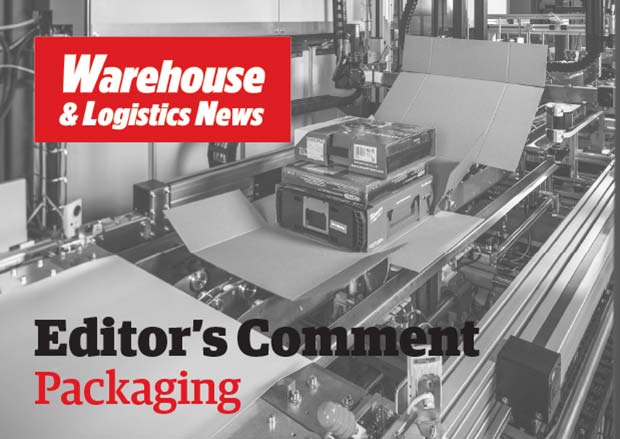It may well take many years before ecommerce businesses reach the point where they can deliver net-zero supply of the products that consumers want. However, what they can do quickly is to reduce excess packaging. Filling oversized packaging with non-recyclable polyethylene or polystyrene void fill undermines efforts to attain a net-zero future. The ecommerce sector can take the opportunity to use available technology to make right-sized packaging for each individual ecommerce order.
This article was first published in the February 1st 2022 issue of Warehouse & Logistics News, subscribe to the magazine by clicking here.
 With its PAPERbubble paper sheets, protective packaging specialist Storopack now offers an innovative and eco-friendly substitute for traditional bubble cushioning in its range. Using paper in combination with air, the new PAPERbubble paper sheets offer the same long-lasting protective properties as conventional air bubble products. Because they are 100% recyclable and made from renewable raw materials, the paper sheets help reduce the use of primary raw materials and fossil resources, which makes them ideal for companies that value both high-quality protective packaging and sustainability.
With its PAPERbubble paper sheets, protective packaging specialist Storopack now offers an innovative and eco-friendly substitute for traditional bubble cushioning in its range. Using paper in combination with air, the new PAPERbubble paper sheets offer the same long-lasting protective properties as conventional air bubble products. Because they are 100% recyclable and made from renewable raw materials, the paper sheets help reduce the use of primary raw materials and fossil resources, which makes them ideal for companies that value both high-quality protective packaging and sustainability.
Kite Packaging has recently released returnable mailing bags, now available in an economical polythene material with 30% recycled content. The lightweight and compact construction conserves vehicle space, enabling more packages to be transported per truck, hence minimising the overall carbon footprint. The double peel and seal strip allows the mailer to be fastened a second time after the easy-tear perforation is torn.
Schoeller Allibert has almost doubled its use of plastic recyclate in a year. As part of its efforts, Schoeller Allibert seeks to reduce its use of virgin plastic in favour of recycled materials. Its use of 15% plastic recyclate in 2020 increased to 28% in 2021.
Sparck Technologies (formerly Quadient) offers CVP Automated Packaging Solutions that create ‘right-size’ boxes in seconds by scanning and measuring the goods – single or multi-item orders – cutting and erecting the box, sealing, weighing, and labelling. Multiple corrugate feeders are becoming more popular with ecommerce businesses as different widths of cardboard can be selected automatically by the machine to minimize off-cuts – and branded board is also an option. By minimising corrugate use, cardboard consumption reduces by 30% on average and void fill is virtually eliminated, significantly reducing packaging material costs.
While it is fantastic to see the innovation in the packaging industry, one hopes net zero can be reached.
George Simpson
Features Editor





Comments are closed.